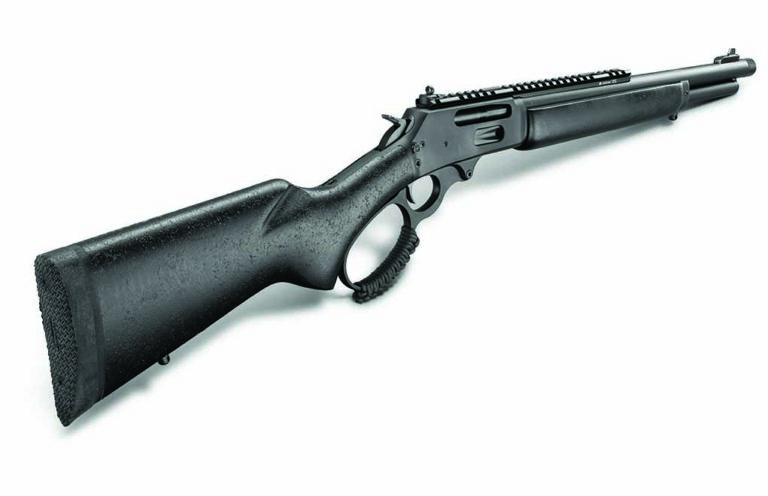
How Americans perfected—and continue to perfect—the rugged lever-action rifle.
Important Advancements In The Lever-Action Rifle:
- Lorenzoni Repeating Pistol of the late-17th century and the German Lagatz Rifle of the early-18th century mark birth of the lever-action.
- The 1860 Henry becomes the first commercially successful lever-action.
- Used by the Union military in the Civil War, the Spencer Rifle becomes the first repeater adopted by any military.
- Winchester 1873 improves on the Henery rifle design with closed tubular magazine, wooden forearm, steel receiver and loading gate.
- Marlin 1889 flat-top receiver advances lever-action into the modern era, making them compatible with optical scopes.
- Savage 99's rotary magazine allows the lever-action to safely load cartridges with spitzer bullets.
- Browning Lever-Action design gives the rifle the ability to shoot belted magnum cartridges.
A mythos has evolved around the lever-action rifle that it’s as American as apple pie and baseball. Why wouldn’t it be? Nearly every silver screen hero and villain—from John Wayne to Clint Eastwood—has worked one to supreme effect. Hell, those of certain vintage will remember the TV show, The Rifleman, which starred—next to Chuck Connors, that is—a large-loop Winchester Model 1892. Legend-building such as that is bound to leave an impression, although the notion is as phantasmic as movie house flickerings.
Unfortunately, the concept of this All-American gun was booted around the dusty cobbles of European gunsmith shops nearly 200 years before Tyler Henry set brass to steel. Fair enough—the Lorenzoni Repeating Pistol of the late-17th century and German Lagatz Rifle of the early-18th century were as rare as baths were in those days. Paucity makes them forgettable. Nevertheless, all the pieces were there—from lever to magazine—to give these arms fair claim to the mantle of the first lever-action. So, to the chagrin of many, our icon has a distinctively Old World accent.
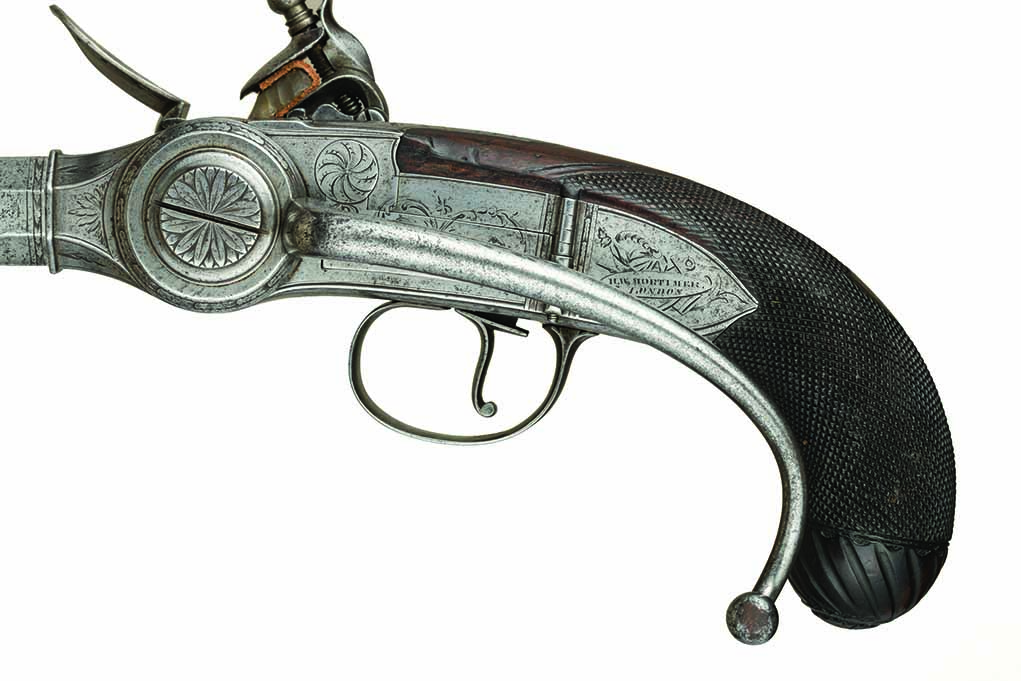
Even so, the origin of the lever-action is no reason to draw a long face, friends. For while the folks “across the pond” might have cooked up the idea, we Americans perfected it. We made the gun the hammer that fashioned a nation, the greatest deer-getter of all time and the symbol of rugged individualism set in blued steel and American walnut.
And, we continue to do so.
The lever-action rifle continues to live large—not simply in our wistful memories of bygone eras, but in cold steel. In addition, the gun remains relevant because, like the country that’s brought its zenith, it continues to evolve while remaining true to its roots. So, yes, the lever-action isn’t as “all-American” as most of us figured. But it sure as heck is an American legend, and it persists in finding ways to retain this crown.
Lever-Action Rifle Goes To War
Frankly, the lever-action isn’t generally thought of as a military arm, despite its many assets that lend it to the task. Yet, it’s fair to say that the American Civil War was the fertile soil from which the lever-action blossomed.

Perhaps the conflict’s most storied gun was the 1860 Henry Rifle, although it was never formally adopted by either side, nor was it widely used (maybe around 7,000 saw action). It made its way onto the battlefield mainly through the soldiers themselves—almost exclusively Union—who procured them via their own purses. A Henry proved a wise investment.
Whereas the Springfield Model 1861 rifled musket could snap off around two aimed shots per minute—four in skilled hands—the 15-round Henry fired away as quickly as you could work the lever and trigger … which, needless to say, was much faster. Who cares that its .44 Henry Rimfire cartridge was underpowered! That’s a lot of firepower—a true force-multiplier—perhaps summed up by Confederate soldiers, who called it “that damn Yankee rifle you load on Sunday and shoot all week!”

Yet, the Henry is really just a footnote in the War Between the States. The Spencer Rifle, the first repeater adopted by any military, was much more impactful; at least the carbine version was. Some 90,000 of these short-barreled rifles were produced for the Union effort and were mainly used by cavalry. It was arguably the sounder design of the time and quicker to reload, especially with the Blakeslee cartridge tube. However, it was lower capacity than the Henry—seven rounds of .56-56 Spencer Rimfire—and much slower to shoot, given that it had to be manually cocked.
Raise Your Lever-Action IQ:
- 5 Of The Best Lever-Actions Available Today
- 7 Marlin Lever-Action Rifles Worth Adding To Your Collection
- Lever-Action Shotgun: Past, Present And Future
- 5 Must-Have Henry Lever-Action Rifles
- .357 Magnum Lever-Action: The Best Pistol Caliber Carbine?
- 9 Greatest Winchester Lever-Action Rifles, Shotguns and Bolt-Actions
Lever-Action Rifle Tames The West
Soldiers of Antietam and Gettysburg later became the farmers and ranchers of the Powder River Basin, San Fernando Valley and other points west. Educated by the hard ways of war, they understood the need apply the right tool to a job. And, by and large, in the yet unconquered frontier, that was the lever-action rifle. Luckily, Winchester had just the gun for America’s Manifest Destiny philosophy.
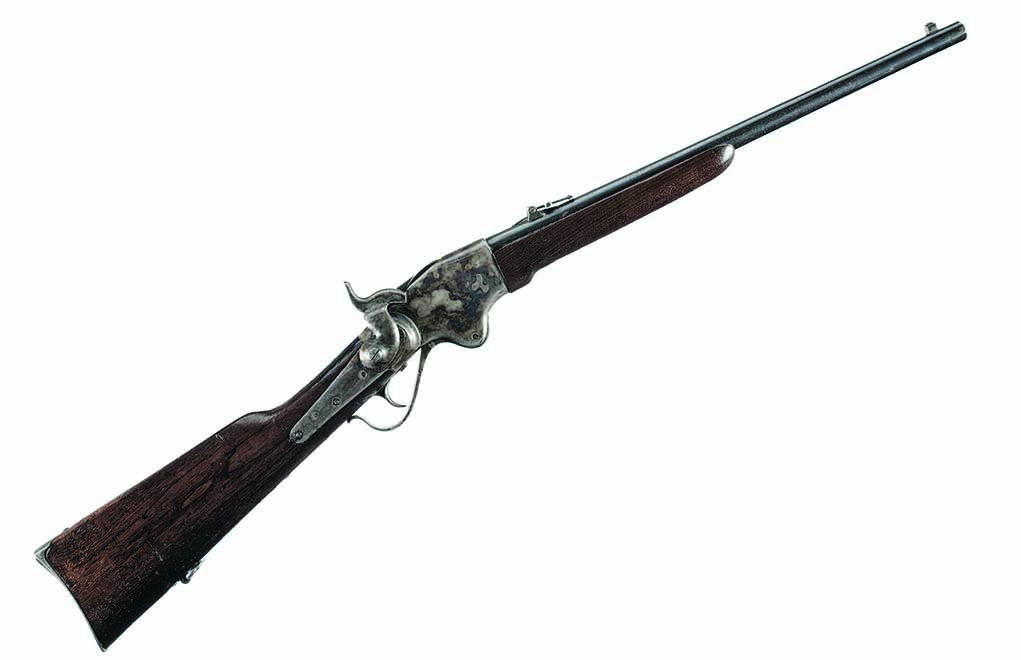
As vital as the plowshare or branding iron, the Winchester Model 1873 saw sodbuster and rancher through good and bad times alike. By today’s standards, many would turn up their noses at the thought of a pistol-caliber rifle as the primary long gun; but, at the time, it was a sound system. When a single washed-out bridge was enough to incite a supply chain disruption, it was wise to feed your rifle and pistol from the same trough. Anyhow, the ’73’s black powder .44-40 (later, .38-40 and .32-20) cartridge was more than enough to handle almost everyday Old West tasks—be it taking a deer or defending the homestead.
Essentially, the Model 73 is a Henry rifle, but improved to excel in rugged environments. Chief among its upgrades were a closed tubular magazine, a wooden forearm, a steel receiver and, most importantly, a loading gate. That last point was a doozy, because it erased the need to fiddle with the butt or muzzle end of the gun to reload and introduced a new concept to long guns: topping off the magazine.

If Winchester was “king” of the American frontier, Marlin was the “queen,” especially during the frontier’s waning days. While it always played second fiddle to the New Haven concern, the gunmaker made some important modifications to its lever-action in the final two decades of the 19th century that were actually more conducive to the way the winds were blowing.
Starting with the Model 1889, the “Marlin Safety” system became standard and perhaps created a better lever-action rifle. Certainly, the improved two-piece firing pin was nice, ensuring you didn’t pop off a round before the action was closed. But the more-weighty design points were the inclusion of a locking lug and, of course, Marlin’s trademark solid top. More metal in the receiver and a tighter lockup made for a stronger gun than did preceding lever-actions.
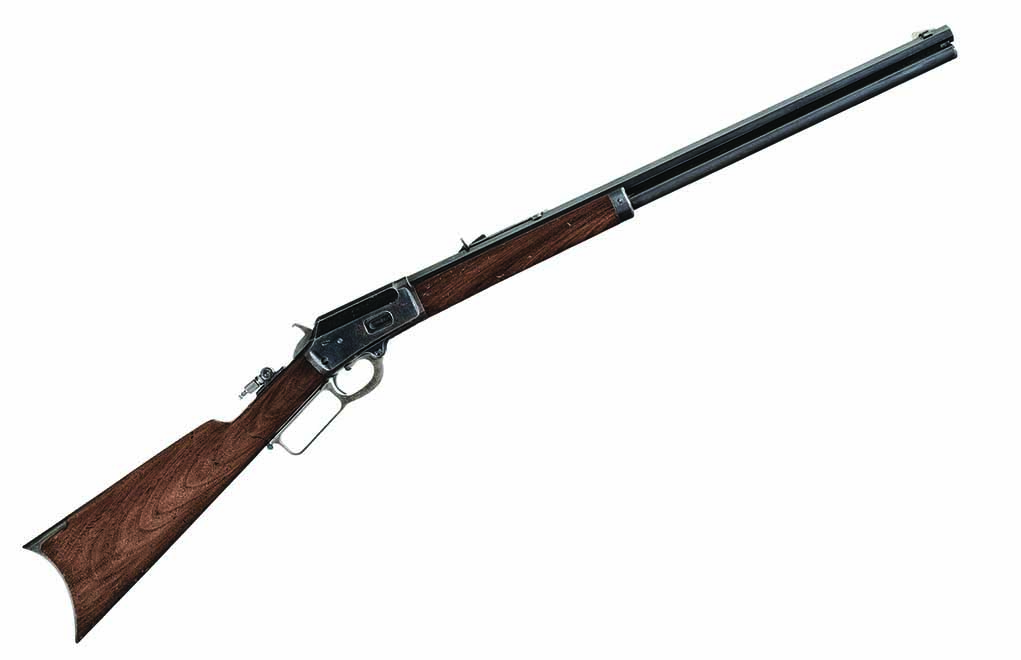
Plus, the side ejection of the ’89 and the Marlins that followed had some distinctive advantages. Canadian and Alaskan “sourdoughs,” for instance, found it was less apt to freeze up than a top ejector—a plus in brown bear country. And, they played nice with telescopic scopes (it’s unlikely that John Marlin aimed for the latter—at the time, they were curiosities—but it certainly set his company up for the next great lever-action era).
On the Hunt
Plenty of shooters still fancy a lever-action in the deer woods. Tradition is mainly to thank for this. However, many of the rifles we cherish today were cutting edge in the time of our grandfathers and great-grandfathers. They had to be: The lever-action’s greatest nemesis—the bolt-action—was on the rise, so the icon had to keep up.
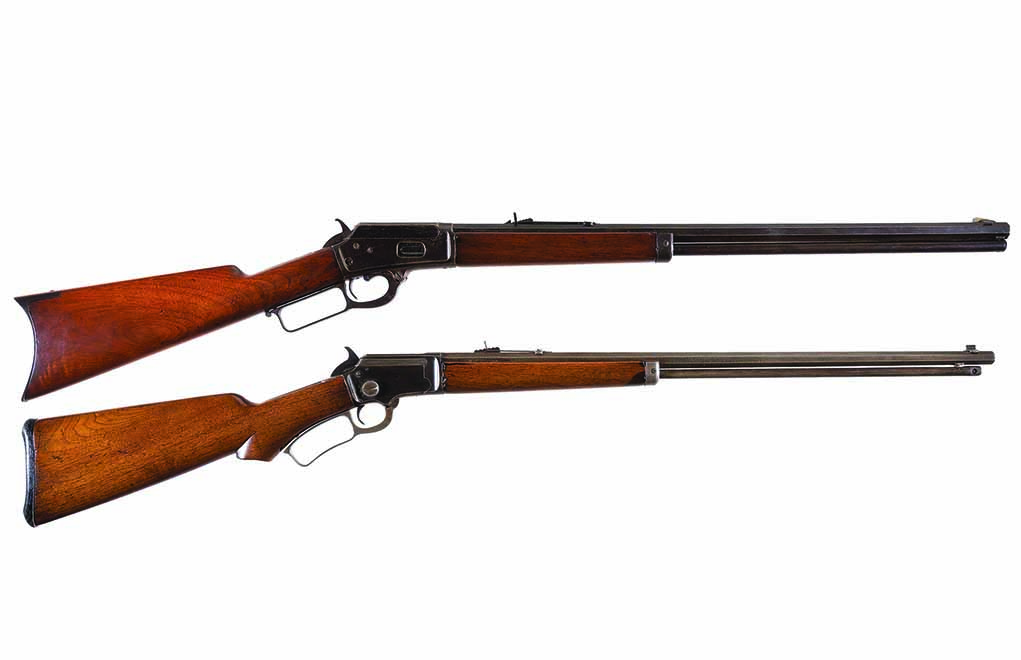
It was mainly an ammunition issue. Smokeless powder and spitzer bullets were the breakthroughs of the day. Neither played nice with toggle-links and tubular magazines. It required some genius to modernize the lever-action for the 20th century. It was found in two of the greatest—John Browning and Arthur Savage.
Browning’s magnificent Winchester Model 1894 set the standard for smokeless powder-safe lever-actions. Replacing the toggle link with a moving breech block that covered the entire rear of the breech bolt when closed, the rifle was more than up to the job, safely firing higher-pressure propellent from rifle-sized cartridges. Of course, the Model 94 chambered in .30-30 continues to stands as perhaps the greatest lever-action of all time.
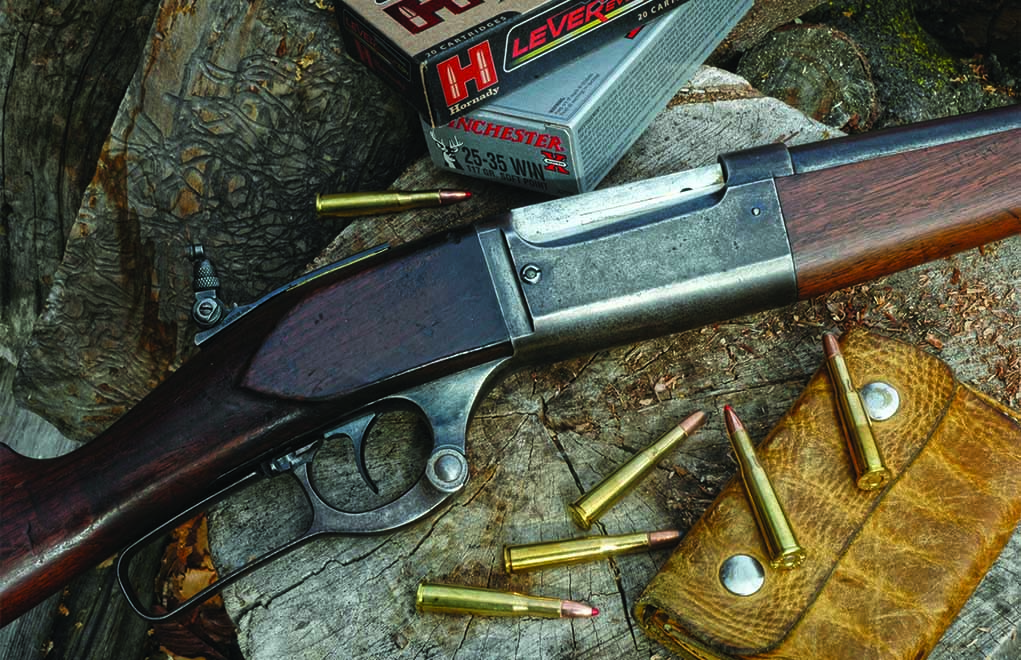
Savage, on the other hand, concocted a truly revolutionary system (pun intended) to incorporate spitzer-loaded ammo. His Savage Model 99’s brass rotary magazine allowed the gun to safely hold touchy ammunition, without the nose dangerously touching primer. He exploited it to great effect, chambering the 99 for the most modern hunting rounds of his day and the past century. The gun’s advantages weren’t lost on hunters: In some hunting camps, the 99-.250 Savage “marriage” is still spoken about in reverent tones.
Even the mid-century belted magnum craze couldn’t bury the lever-action once an adept gun designer set his mind to partner the two. In this case, it was Karl R. Lewis. What he blueprinted for Browning remains one of the most ingenious advancements of the gun.
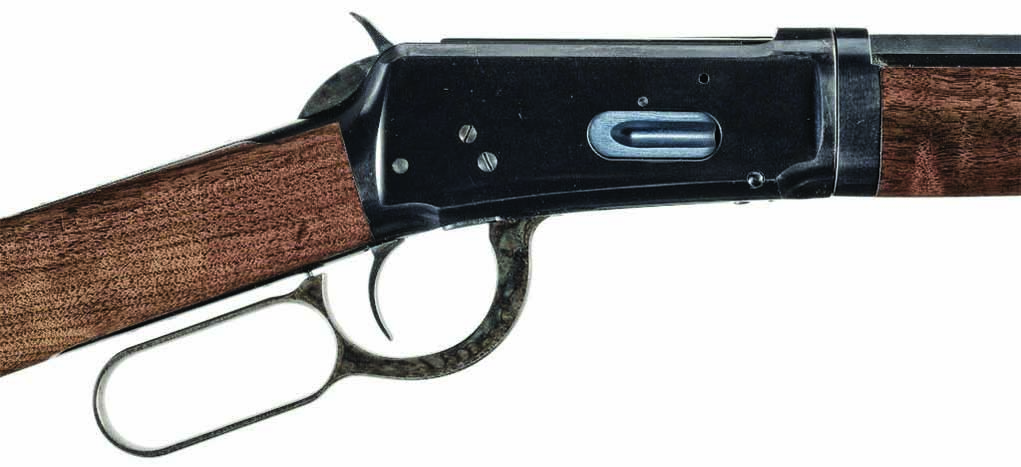
His Browning Lever-Action (BLR) of the mid-1960s is as near to a bolt-action as a lever gun can get. A rotating bolt head with three locking lugs—originally shallow, like a Weatherby Mark V’s—gave the gun the chops to handle heavy-hitting magnums. The Browning BLR in 7mm Magnum remains an absolute classic and as proficient as any similarly chambered bolt gun, although the gun has won fans with a number of Winchester’s short magnum cartridges—.270 WSM, .300 WSM and .325 WSM.
Return to the Classics and End Times
Sad to say, true lever-action design advancements have somewhat stalled for the past few decades. More companies make them, but little new ground has been broken. For the modern lever gun aficionado, this seems to be A-OK. While there are plenty who love the lever-action for hunting or just plain fun, two categories of shooters seem to drive the market. Funnily enough, both pull much of their inspiration from the Old West.

On one hand, cowboy action shooters are bound to recreate the American frontier down to the spur. This has kept the market roiling for replica 1860 Henrys, Winchester Model 73s, Spencer Rifles, Marlin 1894s and a host of others. It’s even re-planted the lever-action seed in one of its birthplaces—Italy—with both Uberti and Chiappa producing a wealth of Western recreations.
On the other hand, disparate as they might be, are preppers. Much as for their pioneer forefathers, the lever-action is appealing to this category, thanks to its reliability and flexibility. Mossberg was among one of the first to recognize this eight years ago with its tactically styled 464 SPX—complete with ample rails and AR-style, six-position buttstock.
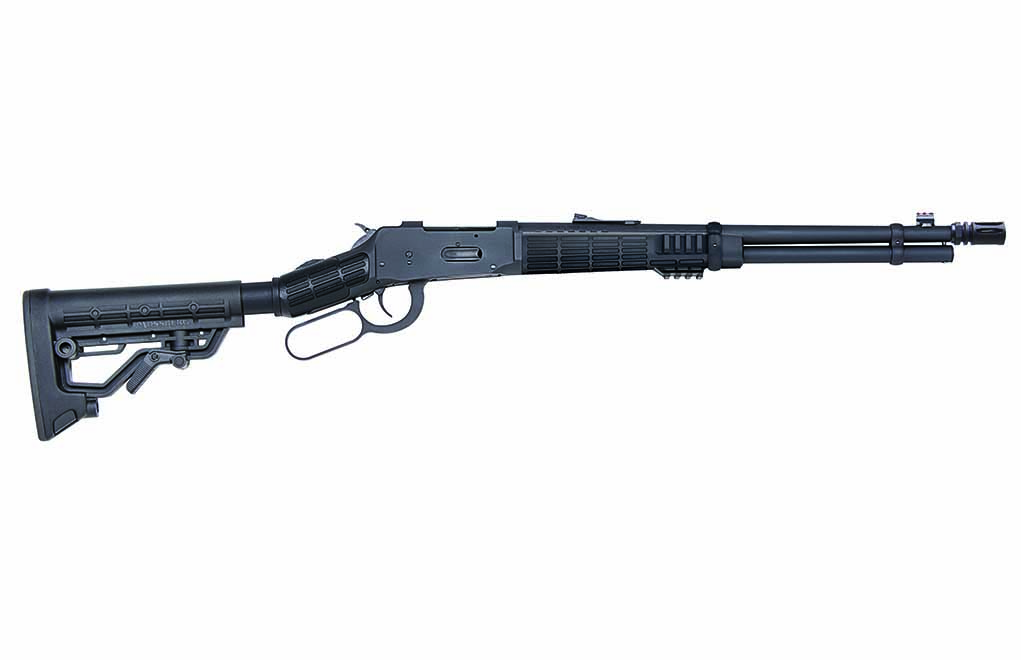
Others have followed suit. Most recently, Marlin has introduced synthetic-stocked iterations of its Model 336, Model 1894 and big-bore Model 1895. Boasting an upper rail and parachute cord-wrapped lever, they look fit for any SHTF situation.
It won’t stop with replicas and lever-actions with a tactical bent. The gun remains relevant and continues to advance because, in short, it just plain works and only gets better with time.
Fast, powerful and iconic—few other firearms can make this boast. No wonder the lever-action is an American legend. And, it’ll continue to be one for generations to come.

Next Step: Get your FREE Printable Target Pack
Enhance your shooting precision with our 62 MOA Targets, perfect for rifles and handguns. Crafted in collaboration with Storm Tactical for accuracy and versatility.
Subscribe to the Gun Digest email newsletter and get your downloadable target pack sent straight to your inbox. Stay updated with the latest firearms info in the industry.

![Best Concealed Carry Guns In 2025 [Field Tested] Wilson Combat EDC X9S 1](https://gundigest.com/wp-content/uploads/Wilson-Combat-EDC-X9S-1-324x160.jpg)


![Best 9mm Carbine: Affordable PCCs [Tested] Ruger Carbine Shooting](https://gundigest.com/wp-content/uploads/Ruger-Carbine-Shooting-100x70.jpg)
![Best AR-15: Top Options Available Today [Field Tested] Harrington and Richardson PSA XM177E2 feature](https://gundigest.com/wp-content/uploads/Harrington-and-Richardson-PSA-XM177E2-feature-100x70.jpg)
